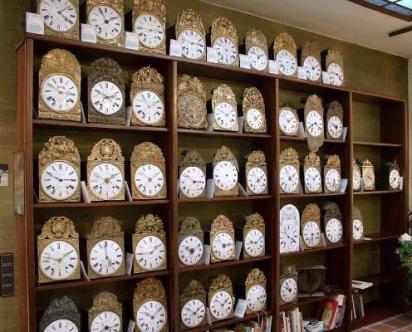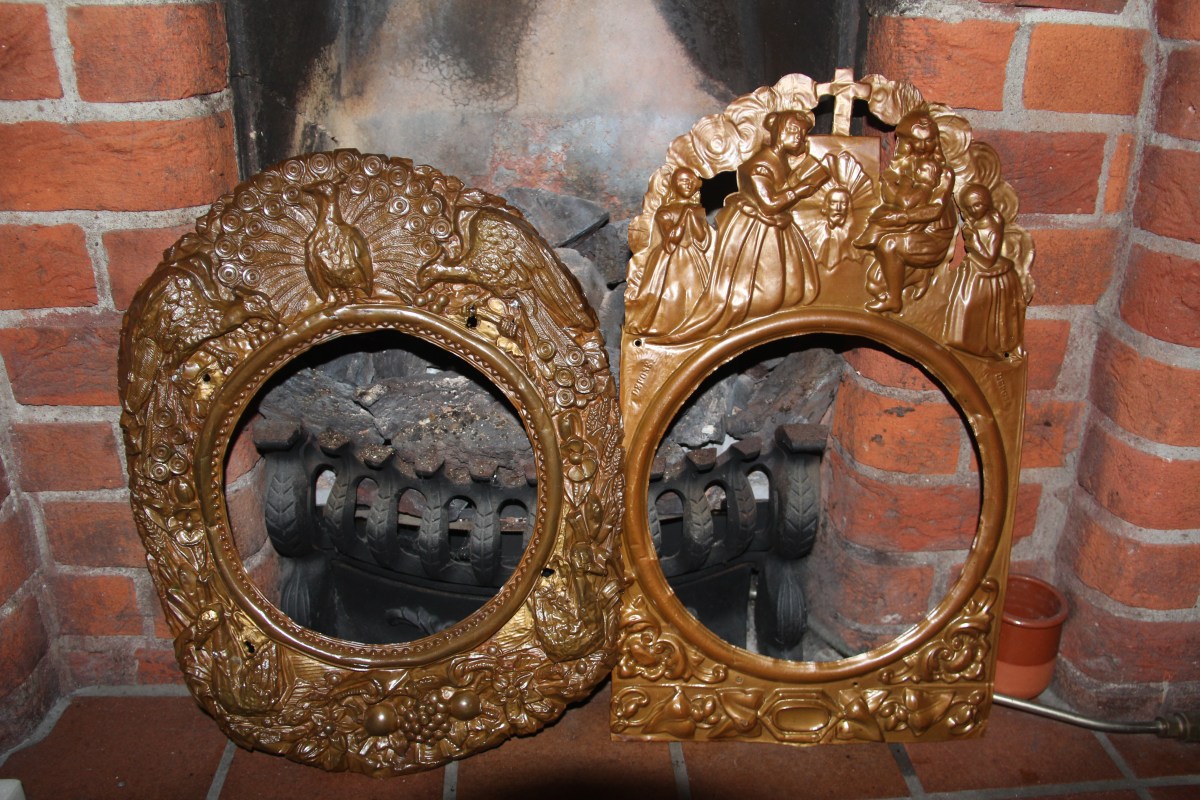I’ve often seen these (unmistakably French) ‘Comtoise Morbier’ clock face surrounds or headpieces. They’re usually still attached to clocks, so these two really spoke to me, in the way that displaced and orphaned things so often do!
The problem was that I just couldn’t choose between them:
one features various birds – obviously a favourite subject of mine
the other one illustrates a family at a graveside. There’s something so very French about that. I mean, we Brits would never show a mourning scene on a household object
I took them both and asked the guy to combine the postage costs (he didn’t)
I was very excited about them arriving. Unfortunately when they came they looked very rough, and I felt like I’d been ‘had’. I didn’t want to show Baz, so I left them in their meagre packing
But yesterday the rain scuppered my paint-stripping plans and instead I spent a happy hour with gloves and various pliers, gently teasing the thin brass repousse, which is very malleable but also easily torn. I then scrubbed them with a toothbrush and they came up a treat, as you can see
These relatively low-cost clocks were made in villages in the region of Franche-Compte, near the Swiss border, from around the year 1600. Various families in each village would be involved in making the different elements of the clocks, before final assembly by a finisher. At that stage the clock faces with their headpieces and workings were portable enough to be carried in groups of four on backpacks, along with their pendulums stored separately below, to be taken for sale further afield

The final purchaser could simply hang the clock with the pendulum exposed, or they could pay their local casket maker to make a long case for it
The earliest clocks had cast brass headpieces, but these were replaced by brass repousse – like mine – in the early 1800s. Production declined after the Treaty of Frankfurt in 1871 permitted the tax-free import of German clocks to France, and then apparently ceased after the First World War
It appeals to me that so many people had a hand in this industry, that the clocks were readily available, and that the wonderfully decorative designs were often based on simple everyday scenes from provincial life
And so these two inexpensive pieces, bought for reincarnation as mirror frames, have a long pedigree of practicality as well as beauty
Could there be anything more French?


